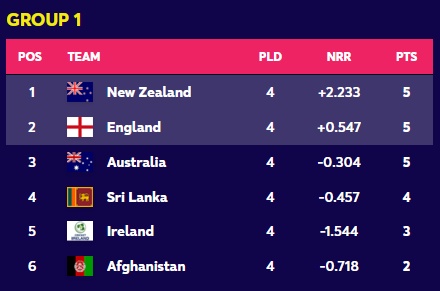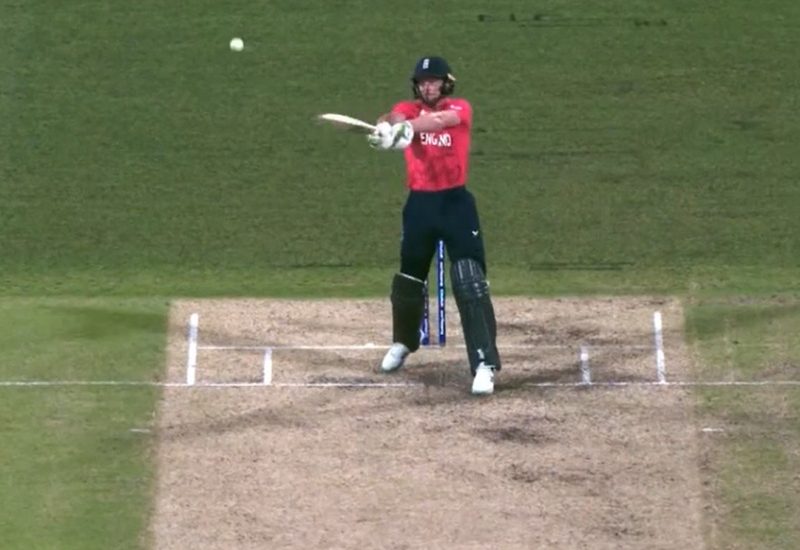We’ve always disliked net run rate. Until now.
Let’s first start with an explanation of the concept of net run rate, which should also double as an explanation of why we’ve always hated it.
Net run rate is the average runs per over that a team scores, minus the average runs per over that the opposition scores.
That is a pretty horrible metric – the product of two already pretty messy numbers. It’s clumsy and cumbersome and unintuitive. You end up with positive numbers and negative ones and the digits that matter are quite often those after the decimal point, which isn’t very satisfactory at all.
But then earlier today, we made a discovery that changed our thinking about net run rate COMPLETELY.
Our discovery was this: the abbreviation of net run rate, NRR, can be pronounced as a word and doing that is pretty annoying.
Long-term readers will be aware that we rather pride ourself on our ability to be annoying. Saying ‘nrr’ instead of ‘net run rate’ is so wilfully unnecessary and stupid that it can’t help but be completely irritating to anyone who hears it.
Come on, say it with us. Really draw it out. Nrrrrrrrr.
That we have discovered this brand new avenue of annoyance during this year’s Net Run Rate Season only makes this better.

We’re feeling positively energised at the mere thought of all the confusingly deployed nrrs we’re going to be able to drop into conversation in the coming days.
Stay abreast of all the latest slog and nrr developments at the T20 World Cup with the King Cricket email.


For those interested in stats/numbers there was a Criticism of nrr decades back in The Hindu
Ideally when there are rain impacted matches, NRR cannot be calculated just by adding up balls/runs etc.
Instead (for team batting first)
runs = revised DLS target (not original score)
Balls = revised DLS overs (not original overs batted)
So in a rain-affected match Net Run Rate should be replaced by Wet Run Rate?
Wrr.
Mmm, maths.
By my reck’nin’, Australia needs to beat Afghanistan by about 60 runs or seven overs to overturn England’s Nrrrrr. That’s assuming that England win, of course, and that they do so only by a run or on the last ball. There’s lots of other assumptions in here, because the Nrrrr changes depending on the number of runs actually scored, but it’s roughly that.
The thing is, I also reck’n that the former is more likely than the latter. That is, a 60 run win is easier to achieve than a seven over win. So batting first would seem to be the better option, despite this rarely being the case. Surely that in itself is another reason to love net-run-rate.
The only thing really wrong with NRR is that if you bowl a team out, you get to count all 20 overs as if you’d bowled them. This is obviously fair, but imagine how much better it would be if you had a team nine down after twelve overs but needed to make sure they actually batted all twenty overs to improve your NRR. It would be very, very easy to achieve (just never appeal), but also EPIC. Bowlers who’ve spent their whole careers celebrating wickets having to restrain themselves in case they accidentally appeal. Mexican stand-offs between batsmen wanting to run twenty and a keeper standing with the ball at the stumps.
Test cricket has always confused the rest of the world. With this, T20 could elevate itself to that level and beyond.
Our Government seems to think we should love growth, as measured in terms of GROSS Domestic Product, above all other metrics.
Why then, in the world of cricket, are we fixating over Net Run Rate? Surely Gross Run Rate is a bigger number and therefore, incontrovertibly, better.
Grrrrr.
Perhaps if the unseasonably cool weather in Australia brings the match to a premature end, they could draft in a team of meteorologists to decide the winner based on barometer run rate.
Brr.
Matches played by pirates or sea captains on sea voyages often have to be cut short for similar reasons, or when there are storms. Sometimes the motion of the ship on choppy waters also affects the movement of the ball, which needs to be taken into account for the sake of fairness.
For this purpose they use Adjusted Run Rate
Arr
Having thought about Bert’s posting overnight, I’m not sure I agree with its conclusion.
Australia’s conundrum is not the 60ish runs, 13ish overs target, it is that such “target” is an absolute minimum required to avoid elimination if England subsequently win. They will want to maximise their nrrrr and to do that they simply need to bowl Afghanistan out extremely cheaply. To that end, I would expect Australia to choose whether to bat or bowl first based on conditions. If conditions are good and the pitch looks to be a belter, Bert is right, they will opt to bat first. But if conditions are helpful for the bowlers they would probably opt to bowl first and try to win big by bowling Afghanistan out cheaply and then knowing how quickly they need to go to maximise their chances of staying in the tournament.
England will have a lesser conundrum. Hopefully it will be as simple as “win match and qualify” – effectively a quarter-final – but if Australia do set any sort of nrr target then England should know exactly what they have to do to qualify, which I think is a big plus.
The rain might still have the final say in all this of course. Why are the cricket authorities holding this important tournament in a country where it rains all the time? That’s what I’d like to know.
Out of curiosity, how do you try to bowl a side out cheaply in T20? Field settings? Three slips and a gulley? Bowl in the channel outside off stump? Target the wickets?
This is why I think that batting first is the only real option, just because I have no idea how a team would go about trying to engineer a seven-over win. I guess you could just play excellent-but-normal T20 cricket, restrict Afghanistan to (say) 120 by bowling tightly, and then going on a massive slogfest. But I think the feasibility of this option leaks away from you very quickly.
60 runs feels a lot more straightforward to achieve, but to win by runs you are obliged to bat first. Someone might want to check my calculation, but assuming it’s right it equates 60 runs to 7 overs. That’s 8.6 runs per over, which seems to heavily favour batting over bowling. That is, adding 60 runs is easier to achieve than saving seven overs.
Probably the easier way though is to win by ten runs or nine balls or something, and then sit back and watch England lose.
Wasn’t in a T20 but was achieved within 20 overs:
https://www.espncricinfo.com/series/australia-tour-of-england-and-ireland-2015-743911/england-vs-australia-4th-investec-test-743969/full-scorecard
Just a shame you weren’t there, Bert. You’d have really enjoyed that one and would no doubt have made much of your presence there, for years if not decades hence.
Another thought is that the Aussie curators can have a say.
Based on the Bert theory, the Adelaide curator might be producing a belter while the Sydney curator is producing a whirling dervish of a Bunsen.
Contre-Bert, Afghanistan have chosen to field.
I hope this is the “through the morning match thread”, not that I’ll be around to use it. Some of us have to work today, you know.
Australia 159 for 8 after 19 overs, leaving Afghanistan a round 100 plus whatever Australia score in the last over to stop Australia going through on Nrrrrrrr.
Nine from the last over. Maxwell unable to fully unleash his silver hammer. So 168 for 8, which I think means a target of 106 for the Aussie bowlers to restrict Afghanistan to.
Back from my meeting, Afghanistan 66 for 2 in 9.2. So 40 needed in 10.4 overs, or just under 4 an over. That’s going to need to special bowling. It’s all looking set for England to go out by losing and not by net run rate.
99 for 2, no 3, no wait, 4, hold on, 5.
Seven runs needed, six and a bit overs to get them. Can Australia restrict Afghanistan to under the magic total and so force England to win by a fraction more than the barest minimum? I’m trying, people, I am trying.
Done. 110/6, Australia cannot now overtake England’s Nrrrrr (except by England losing, of course, which in itself makes the Nrrrrrrrr irrrrrrelevant).
So Sri Lanka now becomes Australia’s max favourite top team ever.
New way of England going through. 33 needed now from 12 balls.
Whoosh. A four-run win by Australia. 11 and 17 from the last two overs.
So now England can afford to lose their match by about 50 runs, as long as they also win. Or they can win by taking 27 overs to get there. Either way, plenty to think about.
Plenty to read, certainly.